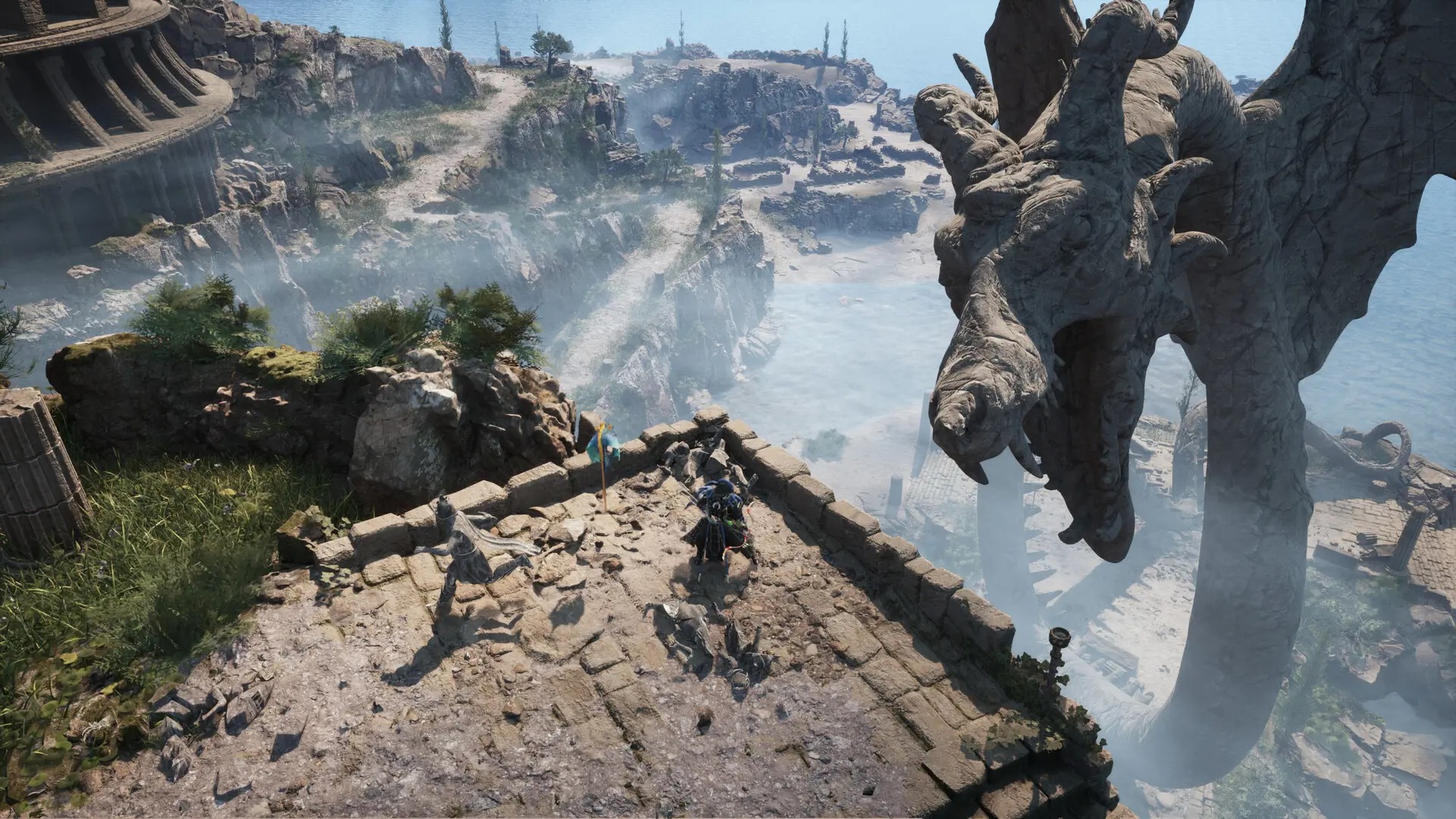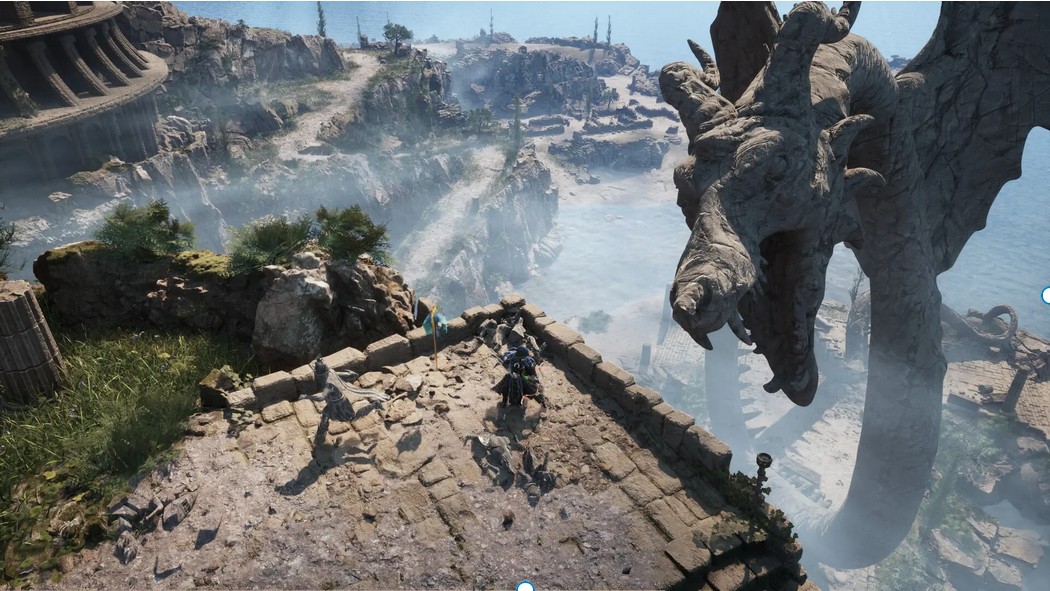Dragonkin: The Banished is a new action RPG that’s quickly gaining attention for its fresh ideas and unique gameplay. To find out what makes it special, we spoke with Jean-Georges Levieux, the production director at the game’s studio.
He talked about the team’s move to Unreal Engine 5, the increasing use of upscaling technology, and how smaller studios can keep up in today’s competitive gaming industry. We also covered important game features like the Ancestral Grid, which connects skill upgrades directly to the items you collect, allowing for more personalised character builds.
Levieux responded to player questions about enemy difficulty, Early Access content, and how loot progression works. He also revealed upcoming additions—new environments, endgame challenges, and city-building features that could keep players hooked.
If you want to know what’s next for Dragonkin: The Banished, this interview gives a solid preview of the studio’s plans and future updates.

What game engine did you use, and why?
Jean-Georges Levieux: We’re using Unreal Engine 5. This is our first game on this engine after 25 years of using in-house technology. It was becoming increasingly difficult for a small team like ours to keep up with technological advancements, especially in terms of rendering quality. The same goes for world-building and level design tools.
What are your thoughts on studios relying on upscaling tech like DLSS and FSR for optimization, instead of traditional methods?
Jean-Georges Levieux: It depends on what you mean by “traditional methods.” If it means hitting target framerates at native resolution, that’s becoming nearly impossible nowadays. Everyone wants the best possible visuals, and without using upscaling methods, you have to make huge sacrifices.
Sure, it’s doable without them, but the compromises and development costs are significantly higher. For a team like ours, it’s simply not feasible. We must also acknowledge that the qualitative progress in the field is impressive.
Has Dragonkin: The Banished not considered being outshone by Path Of Exile 2 since it is the next big ARPG on everyone’s mind?
Jean-Georges Levieux: Of course! It’s the gold standard in the genre today, and we’re not competing on the same level. That said, we’re trying to bring our own innovations and gameplay systems, and Dragonkin remains an interesting alternative for players.
Our skill system with the Ancestral Grid is a great example, and we’ve received very positive feedback about what it brings to the game.
The Ancestral Grid has been highlighted as a unique feature of the game’s skill system. Can you explain how this system evolves with the player and its impact on gameplay?
Jean-Georges Levieux: The idea was for the skill system to be fully integrated into itemization, so it’s completely tied to loot. Acquiring a new skill isn’t just a matter of equipping and using it, every fragment you pick up is a chance to see how you can evolve and modify your skills. It makes character progression through skills feel much more “alive” and, above all, unique. It’s nearly impossible for two players to have the same grid.
Some players are concerned about the amount of content available in the Early Access version, noting that it currently includes only the prologue and Chapter
1. What content updates can players expect in the near future?
Jean-Georges Levieux: A significant portion of endgame content is already available in the first Early Access release through the Hunting Board. The preset section of the board takes about 30 hours for players to complete, and the random section allows for as much replay as they want.
In the first major update, we’re adding a new type of end game trials and a new biome with its own enemies, which will reinvigorate the experience and offer substantial playtime, not to mention the additions to the crafting system that will further expand theorycrafting.
Some players have criticized the fact that enemies scale along with the player, defeating the purpose of leveling up in a sense. What was the take of developers on it?
Jean-Georges Levieux: It’s an intentional choice! We want full control over the pacing during the story and to ensure that players can enjoy it without wondering whether their character is strong enough or whether they need to farm to keep progressing.
Also, we have a wide-ranging difficulty system that lets players choose the level of challenge they want as they progress during the story.
That’s the system we also use in the endgame, specifically on the Hunting Board, where difficulty is determined by the chosen Hunt.
In short, we only impose real “gear checks” in the endgame, and we want players who just want a relaxed story experience to be able to enjoy it that way.
Item rarity being locked behind level progression is another point of contention that I found players complaining about, are there any plans to change this if there are enough complaints?
Jean-Georges Levieux: Our goal is rather to improve the current system by adjusting loot tables and adding a system that provides more “exciting” rewards during leveling. Again, gear is only one part of itemization; the Grid fragments are just as important, and the feedback on that aspect has been very positive.
The game offers an excellent foundation to be a good ARPG contender, how much are the developers aiming for it to sell during the first few months after Early Access?
Jean-Georges Levieux: We hope to convince as many players as possible to join the Early Access adventure with each update. We believe that adding a new playable character and multiplayer features will be key milestones. But of course, the full release will be the major moment in terms of player count.
What can we expect to see in the spring update for the City building feature? How much will the developers expand on it in the subsequent updates?
Jean-Georges Levieux: A lot! We even considered naming the update the “City Update.”
We’re adding a bunch of new Artisans that will greatly expand theorycrafting possibilities. For example, the Great Blessor lets you sacrifice equipment and fragments, and through enough sacrifices, boost your talents or skills.
We’re also adding the Arsenal, which will allow players to save full character presets and switch between them instantly, making it easy to test different builds.
What are some of the planned endgame content and activities that are planned for Dragonkin: The Banished’s future?
Jean-Georges Levieux: We’ll keep expanding the Hunting Board with new biomes. In the first update, we’re introducing a new type of trial – the Test of Will – where you’ll face special enemy waves. We’re also adding a new reward type, the Eternal’s Gifts, which basically lets players target farm gear, fragments, and crafting resources.
Another type of trial is also in development, which we’ll talk about later. One of our other big goals is post-max-level character progression. We’re thinking a lot about it, and player feedback is helping shape our ideas every day to create the best system possible. We already have several solid concepts in mind, but we really wanted to use Early Access to fine-tune our approach.
